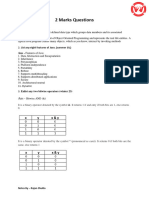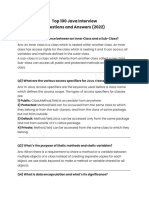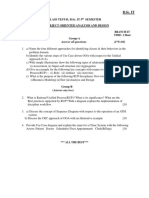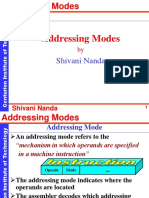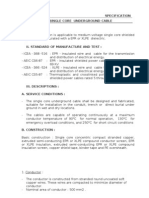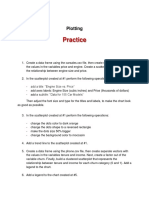0% found this document useful (0 votes)
6 views7 pagesJava Interview Q and A
The document covers various Java programming concepts, including type erasure in generics, the Java Memory Model, immutable objects, and the String Pool. It also explains differences between operators like == and .equals(), method overloading vs. overriding, and the use of the final keyword. Additionally, it discusses resource management with try-with-resources, the distinction between interfaces and abstract classes, and the concepts of autoboxing and unboxing.
Uploaded by
NandaShivaniCopyright
© © All Rights Reserved
We take content rights seriously. If you suspect this is your content, claim it here.
Available Formats
Download as DOCX, PDF, TXT or read online on Scribd
0% found this document useful (0 votes)
6 views7 pagesJava Interview Q and A
The document covers various Java programming concepts, including type erasure in generics, the Java Memory Model, immutable objects, and the String Pool. It also explains differences between operators like == and .equals(), method overloading vs. overriding, and the use of the final keyword. Additionally, it discusses resource management with try-with-resources, the distinction between interfaces and abstract classes, and the concepts of autoboxing and unboxing.
Uploaded by
NandaShivaniCopyright
© © All Rights Reserved
We take content rights seriously. If you suspect this is your content, claim it here.
Available Formats
Download as DOCX, PDF, TXT or read online on Scribd
/ 7





















